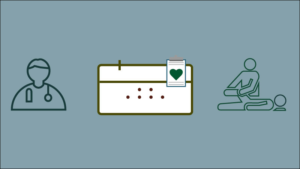
Check Growth Readiness of Your Physical Therapy EMR
Are you looking to grow your practice? Does your EMR

Are you looking to grow your practice? Does your EMR

Practice Pro has appointed a new CEO. Tim Moore has been named the company’s new Chief Executive Officer. Tim succeeds Sanjay Patel, who has served as CEO since founding the company in 2000.

Getting paid by Medicare and other government and commercial payers on time, in full, is clearly easier said than done. An alternate lies in a cash based practice that holds out the promise of faster and more lucrative cash flows.

Do you have a robust and efficient billing process in place that keeps your cash flow healthy and patients happy? Getting paid every penny that you deserve makes for a good sound bite but it is clearly easier said than done.

As a transformative virtual care program, Remote Therapeutic Monitoring (RTM) complements Remote Patient Monitoring (RPM) to help realize significantly better patient outcomes. RTM uses non-physiological therapeutic data such as pain levels, adherence to medications, and alignment to therapy to manage and control chronic conditions. Remote Therapeutic Monitoring devices automatically record and report health data to the care team for more effective care strategies and delivery.

When growth is on the cards, as you add on more patients, new locations, and innovative treatments, does your physical therapy EMR software scale to take on the increased activity?
There are several capabilities that underpin a growth ready, intuitive EMR including the flexibility of managing multiple disciplines with industry standard documentation, billing, and reporting features.

For physical therapy practices, physician referrals are a vital source of appropriate referrals who would benefit from physical therapy intervention. Managing the process of acquiring and converting referrals into patients on the clinic schedule is therefore a priority activity.

Ensuring the financial health of the physical therapy clinic requires payments posting to be done at a regular cadence, among other things. Playing a pivotal role is the Physical Therapy EMR that connects the dots across these disparate streams of transactions to post payments and keep track of them.

The future of physical therapy clearly lies in balancing virtual care with in-person care as each brings its own distinctive advantages to the care equation. By making PT care possible within the patient’s home, telehealth improves profitability of rehab services, expands access to care, standardizes care procedures, raises adherence with the plan of care, boosts patient experience, and lowers referral leakage.

Is patient volume going up but collections flat or even dropping? Is income keeping pace with clinic growth? With the decreases in reimbursements over the last several years, it has clearly become more important than ever for a physical therapy practice to get paid every penny that is deserved.